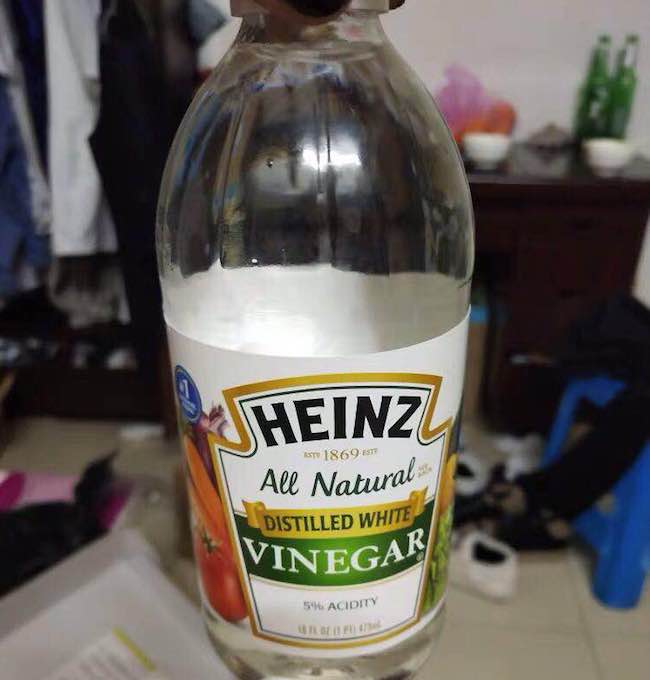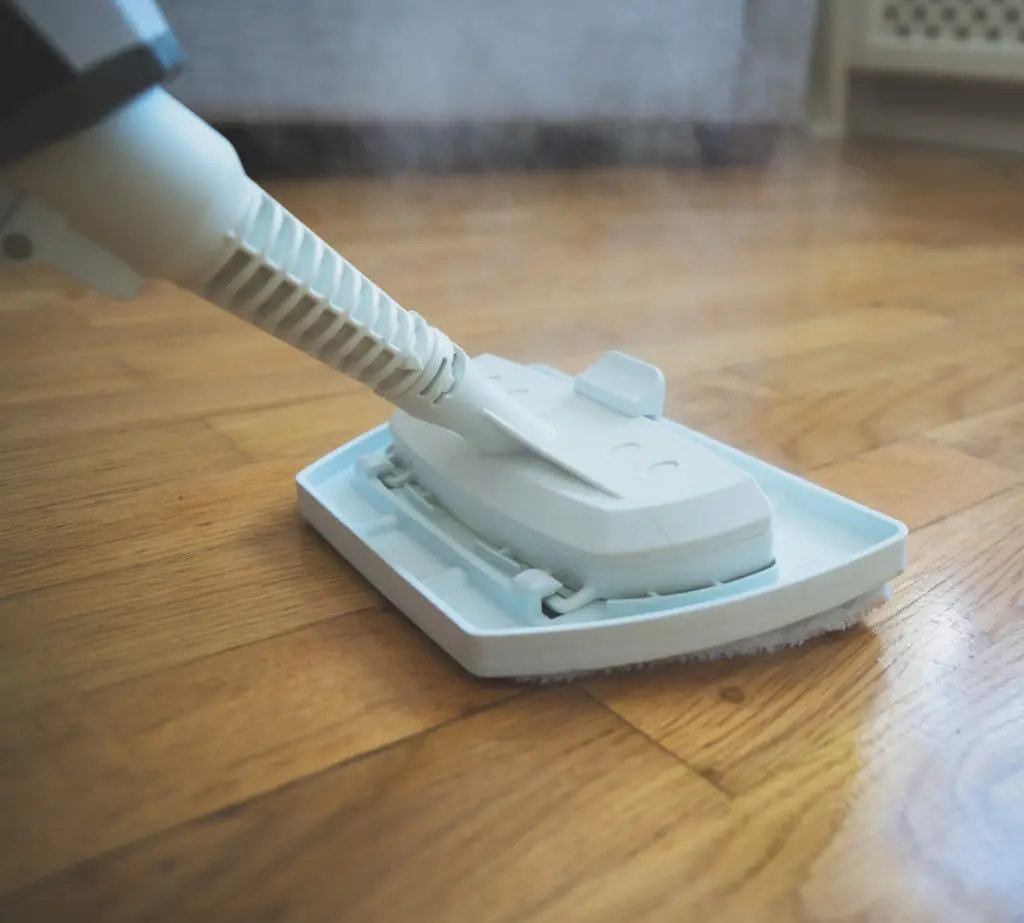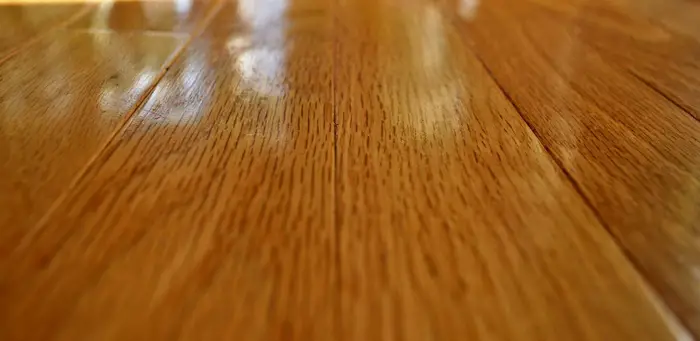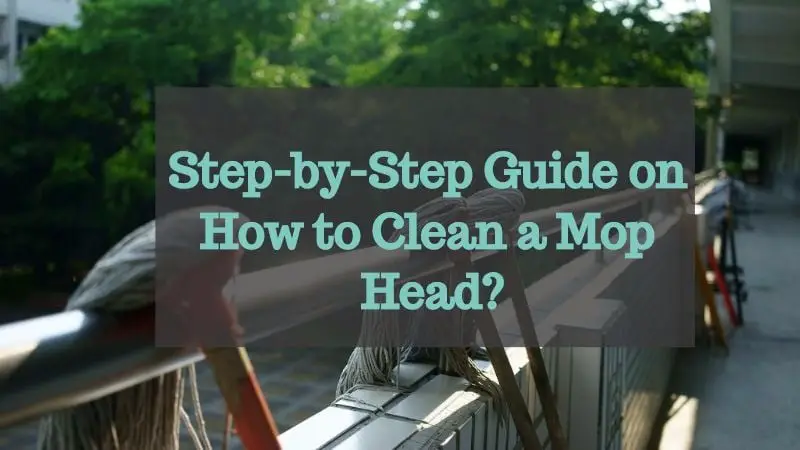No matter how much you clean your house, dust, dirt, and germs enter through myriad ways every day and there’s not much you can do about it. Kids and pets playing outside will bring home germs and bacteria along with dirt. Dusting and vacuum cleaning may not be enough for houses that are ransacked by toddlers and furry paws. You need something more powerful to get rid of the nasty gunk, and this is where you need a steam mop.
Some people often ask me ‘can I put vinegar in my steam mop’ and the answer is yes. Vinegar is a natural cleaning agent that not only cleans but also sanitizes the surface. You can safely add white vinegar or apple cider vinegar to the water tank in your steam mop to clean tiles, linoleum and vinyl floors. However, you must avoid using vinegar in your steam mop when cleaning hardwood floor as this can destroy the chemical finish on this type of surface.
While steam mop manufacturers claim that distilled water is enough to clean and sanitize the surface, nothing can beat a solution made of white vinegar and water. This is cheap and easy to prepare a homemade solution that you can use on almost all surfaces.
Easy Recipe For Effective Vinegar Solution
If you wish to use a solution of water and white vinegar for cleaning, here’s a quick recipe to help you with it. The acidic feature of vinegar can not only cut tough stains but also kills allergens to a great extent. Here is the recipe to follow:
- Take two cups of water, two cups of rubbing alcohol and two cups of vinegar into a mixing bowl.
- Add three drops of mild liquid dishwashing soap in the mixture made of water, vinegar, and alcohol
- Now mix everything together with a spoon and put this mixture in the tank of your steam mop.
Advantages of Using Vinegar For Cleaning

White vinegar solution contains about 4 to 7% acetic acid. In some brands, the concentration of acid is slightly higher and they may be used for cleaning purpose. When used in a 50/50 ratio with water, white vinegar mixture works as an effective agent for cleaning floors, countertops, coffeemakers, microwaves, bathtubs, toilets and carpets.
Vinegar can help you get rid of tough stains and buildups on the floor. It can easily dissolve hard water stains, soap scums, dried food stains, and adhesive left behind by stickers.
The acid content in vinegar also acts as a wonderful sanitizer and disinfectant that is powerful enough to destroy harmful bacteria like E. Coli and Salmonella from your floors.
Vinegar also helps you get rid of bad odor from the floor so that your house smells nice. If you don’t like the smell of vinegar, add a few drops of essential oil to the solution.
I suggest that you don’t dilute vinegar too much as this can weaken its potential to clean. If your floor is made of materials other than hardwood and stone, you may increase the concentration slightly to get the most out of your homemade vinegar cleaning solution.
Steps For Cleaning Vinyl Floors With Vinegar
If you have vinyl plank flooring, I would recommend you to not use a steam mop for cleaning because the moisture can seep through the planks and heat can weaken the adhesive. There are certain special types of steam mops (see my reviews) with variable settings that can be used on vinyl floors. However, if you don’t have a special model, it’s best to stick to the traditional methods of cleaning.
If the vinyl floor is not planked, you can go ahead and steam clean as usual. Add one part of vinegar to two parts of water to form a cleaning solution for vinyl floor. Vacuum clean the surface to remove dust and debris and then use a steam mop to sanitize.
Steps For Cleaning Tile Floors With Vinegar
If you wish to clean the floor tiles and grout, add about half a cup of vinegar to one gallon of warm water. First, sweep the floor with a broom or use a vacuum cleaner to suck the dust and large particles or loose dirt. Add the vinegar mixture to your steam mop and start cleaning to leave your floor sparkling like new and smelling fresh too.
Why You Must Not Use Vinegar To Clean Hardwood Floors
While vinegar has several benefits when used for cleaning different types of floors and other household items, it should not be used on hardwood floors. If you accidentally use a steam mop with vinegar solution on wooden flooring, this may cause cracking, peeling, and discoloring the finish.
The wooden floors come with a chemical finish on the top, and this is meant to protect the surface from damage and retain the shine. As vinegar is acidic in nature (although mild in concentration), it can potentially react with the chemical substance, resulting in a dull and discolored surface.
Furthermore, too much moisture on hardwood floors can also result in decaying the surface gradually. Make sure you keep the use of steam mop on wooden floors to a minimum or else you may start noticing signs of swelling, warping, and bulging soon.
To avoid damaging hardwood floors, always use a solution with a neutral pH level in your steam mop. Attach a microfiber mop the head of your steam cleaner to protect the surface from being overexposed to intense heat and moisture.
An alternative cleaning solution you can prepare at home to clean floors comprises of water and mild liquid soap. This can effectively dislodge the dried stains and remove dirt and grime on the surface. This alternative also comes handy when you don’t want to use vinegar or any other acidic solution that can damage the floor.
Additional tips: 10 Tips For Mopping The Floor To Make It Clean Enough To Eat On
Benefits Of Using Just Distilled Water In Steam Mop

Steam mops don’t come cheap and if you have read the product manual, you will realize that it is meant to be used with distilled water only. As the water is heated to achieve a certain temperature, it turns into vapor that is dispensed on the floor at high intensity. This not only dislodges stubborn dirt, stains, and grime but also kills germs.
Most portable steam mops and cleaners come attached with a microfiber pad that can wipe away the loosened dirt, leaving the floor clean, dry, and sanitized. While this is a much efficient method of cleaning than traditional mopping, there are many more benefits associated with using just distilled water.
- This is also a cost-effective solution in the long run as you don’t need to buy any mopping solution separately.
- Steam is chemical-free, so your kids and pets are not exposed to harsh chemicals even when you deep clean the house.
- Steam not only removes dirt but also deodorizes the house. If there are any bad odor such as cigarette smells or likes within the house, steam can remove them with ease.
- If you wish to disinfect your house, use a steam mop that can reach a temperature of 212 °F to be able to destroy the disease creating germs and bacteria. With a steam mop, you can naturally get rid of fleas and bed bugs.
- Vinegar is a natural cleaning agent that you can use with a steam mop to enhance its performance. You can also add a mild liquid soap to remove stubborn gunk and essential oils to deodorize the surface.
5 Common Steam Mop Myths That Will Shock You
Whether you already have a steam mop or are thinking of buying one, you will probably look for information regarding these devices. Unfortunately, some of the information or advice you get from neighbors and friends may do more harm than good. There are many myths surrounding the use of a steam mop and I would like to bust some of the common ones here.
1. Steam mops can be used on carpets
If you are thinking of buying a steam mop to specifically clean carpets then you certainly need to rethink your decision. Exposing your carpet to too much moisture may cause mold and mildew to grow on them, leaving off a bad odor. There are some steam cleaners that come with an attachment called a carpet glider that lifts the mop so that the fibers are not exposed to a lot of moisture. In any case, a steam mop cannot be used as a replacement for carpet steam cleaner.
2. Steam cleaning is safe for all types of floors
Most of the steam mop makers will tell you that it’s unsafe to use these devices on unsealed floors but they say they can be used on all types of sealed floors (this is not entirely true). Despite the claims made by your cleaning device’s manufacturer, always double-check with the manufacturer of your flooring to ensure that it will not get damaged by steam.
3. Vacuuming is not necessary when using a steam cleaner
This is one of the common mistakes people commit to save time and end up creating a dirty mess. No matter how advanced or slick steam mop you use, it cannot substitute a vacuum cleaner. Steam mops function by emitting a jet of water vapor that has a high intensity of heat and moisture. It cannot suck any loose dust particles, debris, pet hair or pet dander from the floor. So, if you use a steam mop without vacuuming, you stand the risk of pushing around the piles of moistened dust everywhere.
4. Steam mop can clean grout
Most product manufacturers will tell you that they can clean grout but believe me, it’s far from the truth. Cleaning grout is a big pain and steam can only remove a thin layer over it, unless your steam mop is very powerful and specifically designed to remove buildup dirt and gunk between the tiles. Grout cleaning requires elbow grease, powerful cleaning solution, and a scrubbing brush.
5. Floor gets sanitized just because it is steam
This is another misconception developed by the poorly made videos that show people demonstrating their new steam mop by racing to finish cleaning the house. Please bear in mind that you cannot disinfect the house by just treating the flooring to steam. To kill the germs and bacteria, the steam should reach a specific temperature and different models may take from 8-20 minutes to achieve that point.
Things That You Should Not Steam Clean
Chemical-free cleaning with a steam mop works great at improving the indoor air quality, but there are some surfaces that cannot take a lot of heat or moisture. As a result, you should be careful when using a steam mop for cleaning. Here are a few things that you should not treat with hot steam.
- Any type of porous surface made of brick, marble, or stucco
- The large industrial areas and food plants
- Carpets that are made of thick piles of fiber
- Delicate items such as thin plastics, silks, and velour upholstery
- Anything that can be damaged under intense heat and moisture
If you have tried steam cleaning the above items and have been somewhat successful, I would still suggest you abstain from doing so to prevent any damage in the long run. While steam mops can technically clean large surfaces, they are not the most effective tools for the job. Similarly, silk and other delicate items may get damaged if too much heat is concentrated in one area.
Related Questions
Why you should not add chemicals to steam mop?
Manufacturers of steam mops clearly mention in their manual to not use any sort of floor cleaning solution with water. According to them distilled water is enough and adding chemicals may cause corrosion and void the warranty.
Can I but bleach in my steam cleaner?
No, because bleach emits toxic fumes that are harmful if inhaled. When mixed with steam, the fumes can get uncontrollable and spread everywhere. Plus, bleach can also corrode the device and nullify the warranty.
Related Articles:
Can You Mop Hardwood Floors With Bleach Water?
Can I Use Tap Water In My Steam Mop?
Can You Use Steam Mop On Laminate Floors


